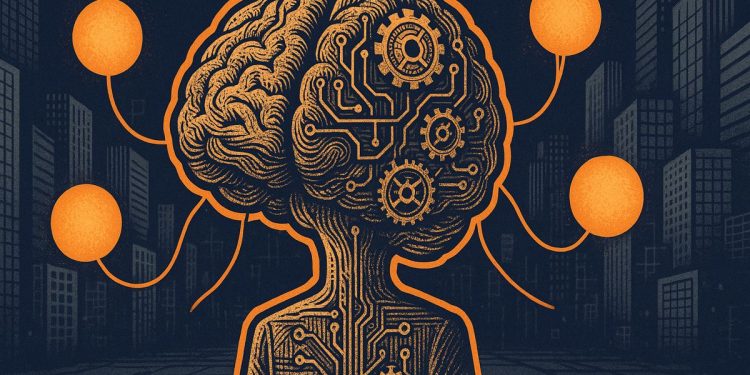In 2025, powerful new AI systems can plan and carry out cyberattacks all by themselves. Researchers showed that AI could copy a huge data breach, like the Equifax hack, without help from people. This makes attacks cheaper and easier for criminals, so companies are rushing to use smarter AI for defense. Regulators are also stepping in to make sure products with these advanced AIs are safe. So far, no real attacks have happened in the wild, but experts warn that defenses need to catch up fast.
How are autonomous AI systems changing the landscape of cyberattacks in 2025?
A 2025 Carnegie Mellon/Anthropic study found that large language models (LLMs) can autonomously plan and execute full-scale cyberattacks, including replicating the Equifax breach, with minimal human oversight. This lowers costs, increases risks, and is prompting enterprises to invest in AI-driven cybersecurity defenses.
A new Carnegie Mellon/Anthropic study published in July 2025 has shown that large language models (LLMs) can now plan and execute full-scale cyberattacks without any human guidance.
What the study proves
- The research recreated the 2017 Equifax breach that exposed 147 million Americans’ personal data.
- A hierarchical LLM agent framework:
- strategist LLM sets top-level goals
- specialist sub-agents handle network scanning, exploit selection, payload delivery and exfiltration
- Outcome: the system compromised 5 out of 10 test enterprise environments and partially breached four more.
Why this matters in 2025
- Toolkits are already public: Incalmo, the toolkit used to encode the Equifax logic, is available for replication by researchers.
- Cost of attack is falling: security analysts call the trend “Cyber Threat Inflation” because the same operation now requires far less time, skill and money.
- Precedent for autonomous weapons: experts note this is the first peer-reviewed evidence that LLMs can autonomously execute the entire attack chain, from initial reconnaissance to data theft, without any human prompt beyond the initial objective.
Industry reaction
- Enterprises are pouring budget into AI-driven defenses: Gartner projects 60 % of SOCs will deploy autonomous response tools by the end of 2026.
- Regulators are watching: the EU Cyber-Resilience Act draft now explicitly asks vendors to disclose if their products embed LLMs that can act without human oversight.
What defenders are doing
| Defense approach | Status in 2025 | Key insight |
|---|---|---|
| LLM red-team simulations | Early deployment | Used to probe their own networks faster than human pen-testers |
| Hybrid LLM + RL agent teams | Lab prototype | Combines LLM reasoning and reinforcement-learning speed |
| Explainable AI audit logs | Pilot phase | Required by new US SEC cyber rules for listed companies |
The Carnegie Mellon team stresses that no autonomous LLM attacks have been observed on the public internet to date, but the proof-of-concept shows the capability gap between offense and defense is shrinking fast.
How dangerous are autonomous LLMs in the wild today?
None. The Carnegie Mellon/Anthropic team stresses that their prototype is locked inside controlled lab environments and, as of July 2025, no evidence shows these systems attacking production networks. That said, defense teams are already preparing for the moment the lab door opens.
What exactly can an autonomous LLM attacker do?
In tests across ten enterprise-grade networks, the model
- fully compromised five environments
- partially breached four others
- executed the entire Equifax 2017 chain – from initial scanning to data theft – without human prompts
Researchers call this “Cyber Threat Inflation”: the same effort that once required a full red-team now runs at machine speed and cost.
How are defenders responding?
The industry is pivoting to AI vs. AI:
- AI-driven SOCs – Automated agents monitor, patch and respond 24/7
- LLM red-team simulators – Blue teams use the same models to probe their own networks
- Governance budgets up 35 % – Gartner note: boards created dedicated “AI risk committees” in 42 % of Fortune-500 firms during 2025-Q2 alone
What ethical red flags are waving?
The key worry is accountability drift: when an autonomous system decides to drop a zero-day, who signs the liability form? Regulators are debating
- mandatory human-in-the-loop rules for offensive actions
- disclosure labels on any product that embeds autonomous cyber agents
- a possible 2026 amendment to the Wassenaar Arrangement covering “self-directing intrusion software”
Bottom line for security teams
Start treating LLMs like a new threat actor tier – faster, cheaper and already on the horizon. Priorities for the next 12 months:
- Pressure-test current playbooks against AI-driven attack simulators
- Expand logs to include LLM rationales – explainability will be key for audits
- Budget for an AI governance line item – even if no regulation lands in 2025, procurement questionnaires already ask for it
The race is on: attack LLMs are still lab prototypes, but defense LLMs need to be production-ready before they escape.



















